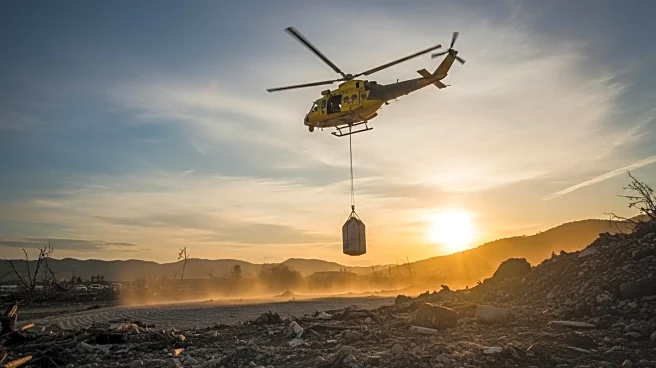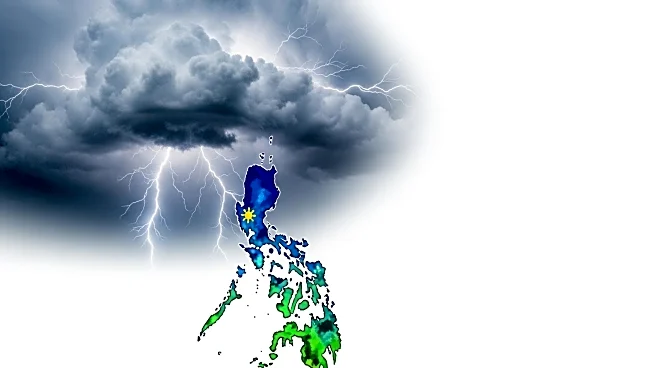What's Happening?
Nepal is experiencing severe rainfall that has triggered deadly landslides in its eastern mountains, resulting in the deaths of at least 11 people. The landslides have affected multiple villages, with significant road blockages reported. The government has issued warnings for severe rainfall in the eastern and central regions, leading to the closure of major highways and grounding of domestic flights. Rescue operations are underway, but are hampered by ongoing rainfall and blocked roads.
Why It's Important?
The landslides and severe weather conditions in Nepal highlight the vulnerability of mountainous regions to natural disasters, particularly during the monsoon season. The disruption of transportation and communication can have significant impacts on local communities, especially during major festivals like Dashain, when many people travel. The government's response, including road closures and flight groundings, underscores the challenges in managing such disasters and the need for effective emergency preparedness and response strategies.
What's Next?
The Nepalese government is likely to continue monitoring the weather conditions and may extend warnings or closures if the rainfall persists. Rescue operations will focus on reaching affected areas and providing medical evacuations where necessary. The situation may prompt discussions on improving infrastructure and disaster preparedness in vulnerable regions to mitigate future risks.
Beyond the Headlines
The recurring nature of such disasters in Nepal raises questions about long-term climate change impacts and the need for sustainable development practices. The government and international aid organizations may need to collaborate on strategies to enhance resilience against natural disasters, including better land management and infrastructure development.











